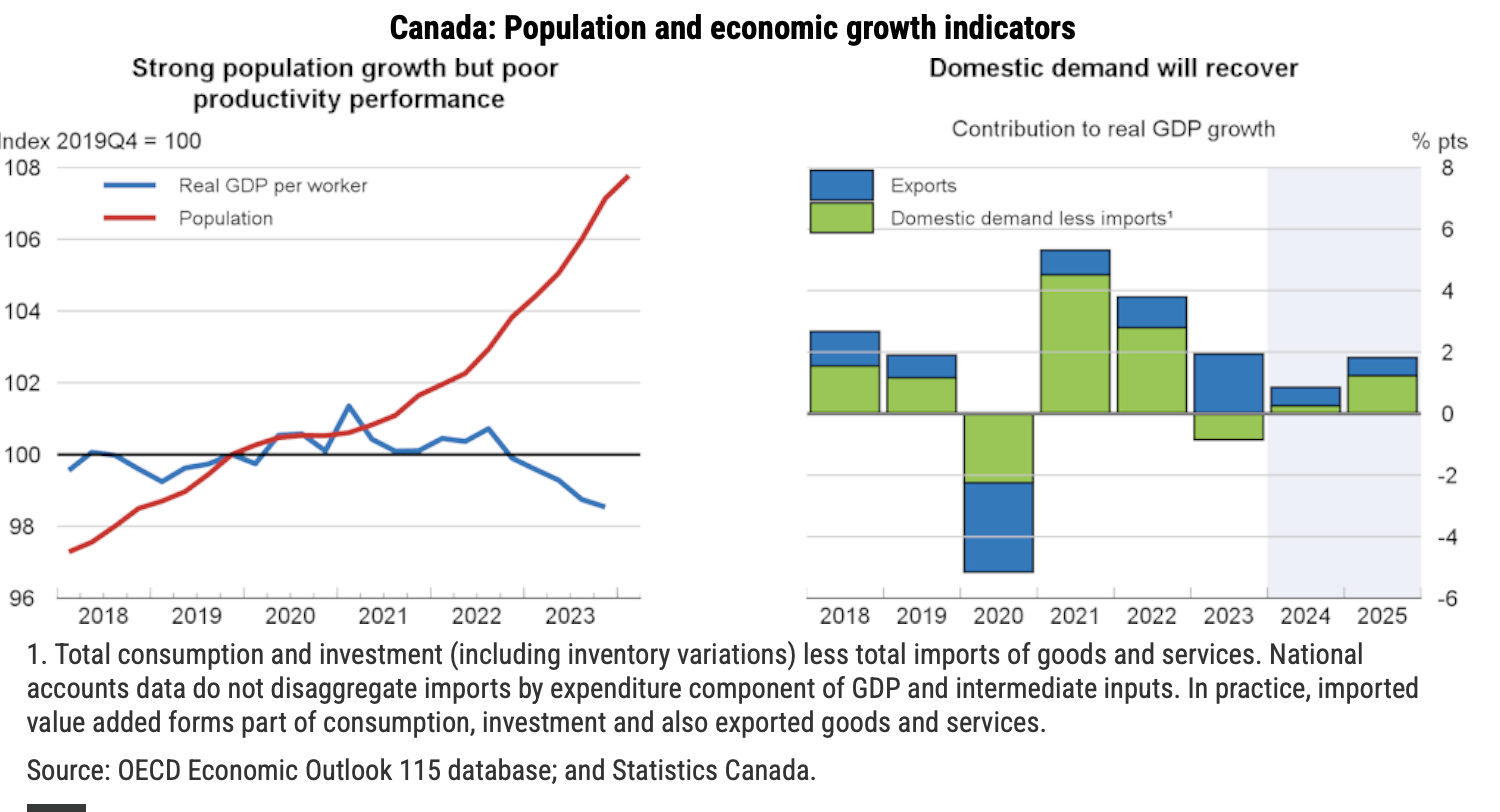Bussiness
Canada Has Strong Population Growth But Poor Productivity: OECD – Better Dwelling

Canada’s growth strategy is ineffective, and actually putting it further behind. That’s the general takeaway from the OECD’s 2024 Economic Outlook for Canada. The intergovernmental organization representing advanced economies, congratulates the country on its record population growth. It’s unclear how this occurs with low real GDP growth and rising unemployment, but the agency has a few suggestions to mitigate the issue.
The suggestions include tighter fiscal spending, facilitating more productive investment, and creating a more tax-friendly business environment. Canada is currently heading in the opposite direction with those suggestions, suffocating its growth potential and amplifying its problems.
Canada’s Population Is Booming. It’s Economy? Not So Much
Canada’s rapid population growth is getting a lot of attention. The annual growth rate hit 3.1% in 2023, the highest growth since the 1950s. Large migrations are typically towards strong economies—attracting those looking for opportunity. It also typically helps to boost growth since more people means more consumption. None of that is seen in Canada.
The OECD emphasizes how oddly slow Canada’s growth is despite these conditions. Real GDP advanced just 1.1% in 2023, nearly a third of the population growth. At the same time, they also point out that unemployment climbed to 6.1% in March as the country added more people than jobs.
Like a degenerate gambler, Canada found a little growth from its rising population. Then, it placed a bet to go all-in on that growth, despite diminishing returns that placed it in a worse situation than it was previously trying to solve.
“Meanwhile, high levels of immigration are helping relieve skill shortages and bring upside risks for private consumption, while also increasing strains on housing markets,” reads the report.
They further note, “Developments in housing debt and related financial stress among households need to be monitored carefully.”
Canadian Productivity Is Plummeting Despite Population Boom
With such large amounts of capital, it’s no surprise that Canada has seen a residential surge. Unfortunately, the capital is being diverted from productive investment, as incentives slant toward housing investment instead of business. The poor policy decisions are amplifying the country’s economic growth issues.
Source: OECD.
“Canada’s absence of sustained labor productivity growth in recent years underscores a need to ensure a policy environment that enables the business sector to become more efficient and to move up value-added chains through increasingly productive activities,” notes the report.
They continue to explain that increased output would create higher wages and household incomes. This, in turn, would help increase revenues and lower the dependency problem they’re trying to solve. Canada is currently doing the exact opposite.
Canada is making progress in one area, though—a stable macroeconomic environment. The OECD states that well-anchored inflation and sustainable fiscal finances are important, and Canada has accomplished that thus far.
They do warn that Canada is heading in the wrong direction when it comes to its fiscal sustainability. “Fiscal sustainability requires implementing credible medium-term plans for lowering federal government debt, aided by ongoing measures to improve spending efficiency,” they warn.
Spending efficiency is bureaucrat for running a tighter budget. They state that planned increases to taxes can help with spending but go on to note that tax reform needs to consider the economic environment.
“Tax reforms should include reconsideration of preferential rates of tax for small businesses, which may affect small firms’ productivity growth and distort the allocation of resources across different types of firms,” reads the report.
Overall, the OECD believes that Canada’s weak productivity emphasizes the need for a more business-friendly environment with a “more growth-friendly tax mix.” They further cite examples of removing interprovincial trade barriers, facilitating employment, and efficient policy on green transition. The latter of which they applaud subsidies, but warn they need to be removed as cost-effective solutions come to market. It is, after all, further spending that requires more debt capital for debt servicing.


)






